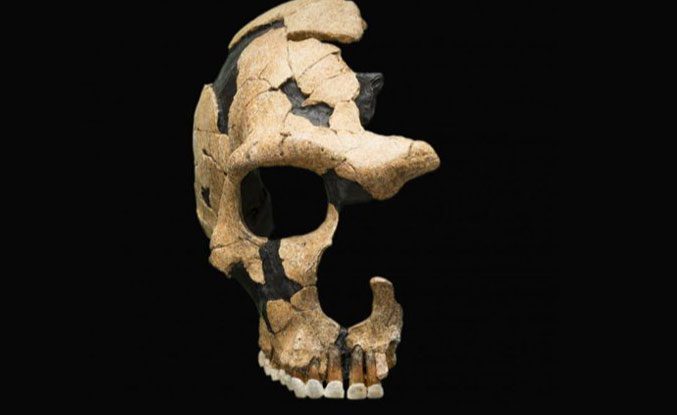Nearly 900,000 years after branching off from the common evolutionary tree of Homo sapiens, the Neanderthals and Denisovans separated more than 1 million years ago. This “ghost species” quietly re-entered and interbred with our ancestors.
A recent study led by Dr. Sriram Sankararaman from the University of California, Los Angeles (UCLA) has discovered that the “ghost species” mysteriously appears in the DNA of four West African communities: the Yoruba and Esan in Nigeria, the Gambian people in The Gambia, and the Mende in Sierra Leone.
They possess up to 2-19% DNA from a ghost lineage, but not from the two close relatives known to have interbred with ancient Homo sapiens: the Neanderthals and Denisovans.

Reconstructed skull from another species ancestor – (Photo: SMITHSONIAN INSTITUTE).
Previously, it was believed that Homo sapiens only interbred with relatively close species, such as the aforementioned two, which belong to the genus Homo and share many similarities with us, having diverged from a common ancestor not long ago.
However, the ghost species found in the DNA of these West Africans belongs to a much more distant lineage, diverging from the family tree of the three species Homo sapiens – Neanderthals – Denisovans at least 1.04 million years ago, according to the study cited in Discovery Magazine.
Referred to as “ghost species” because, apart from the DNA traces in modern West Africans, there is no direct evidence such as remains or tools regarding this mysterious species.
It can only be known as an extinct lineage, as currently, only one species of humans, Homo sapiens (Modern Humans), exists, dominating the entire human world.
It is estimated that this ghost species first encountered Homo sapiens around 124,000 years ago and began interbreeding, leaving behind hybrid offspring that are the descendants of the modern groups mentioned above.
Earlier anthropological studies showed that the ancestors of Homo sapiens began to diverge from the lineage of Neanderthals and Denisovans about 700,000 years ago. Subsequently, Neanderthals and Denisovans continued to separate around 400,000 years ago.
Neanderthals primarily dominated Europe, while Denisovans were prevalent in many regions of Asia.
Around 194,000 years ago, the ancestors of Homo sapiens from Africa began migrating everywhere. It is estimated that tens of thousands of years ago, our species encountered the two aforementioned close species, and interbreeding occurred quite commonly, causing the bloodlines of most Homo sapiens outside Africa today to no longer be “pure.”
According to Dr. Sankararaman, this distant interbreeding with the ghost species indicates that the history of humanity may be even more complex than we have known.



















































